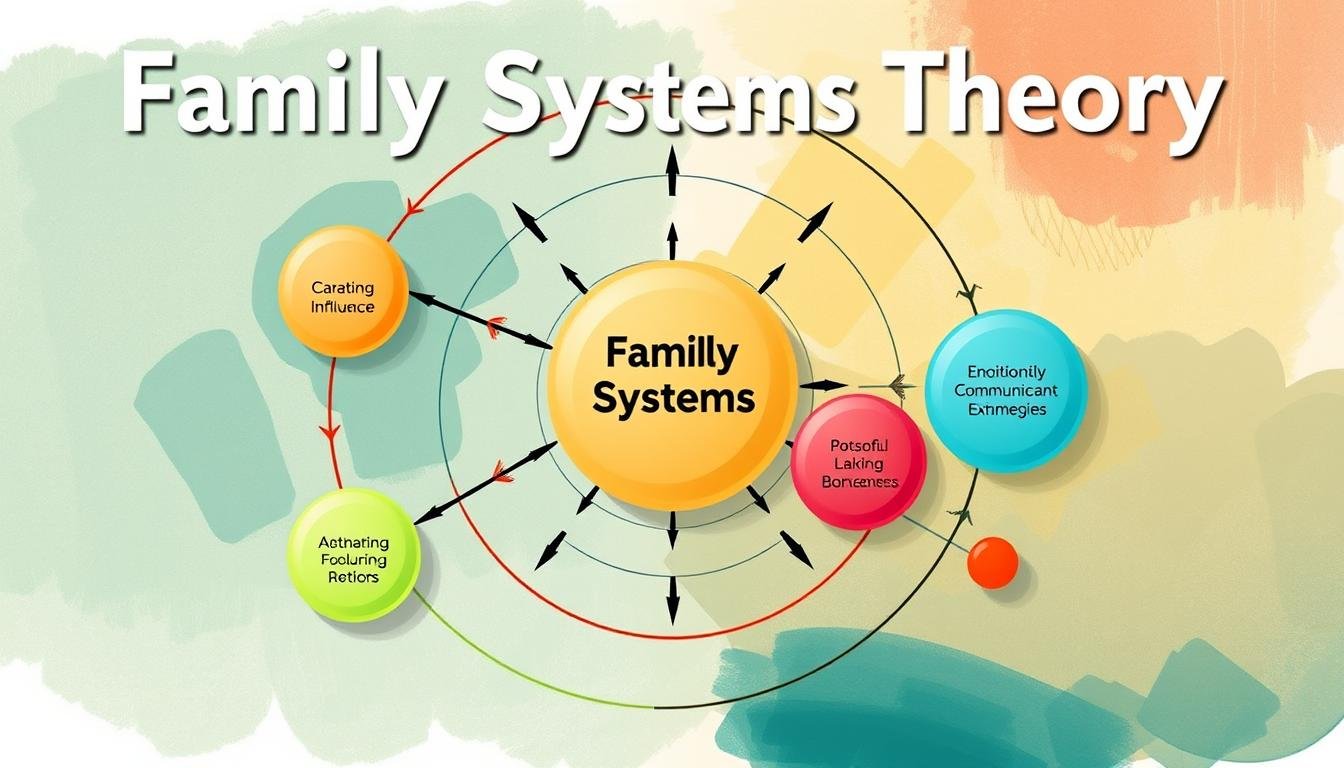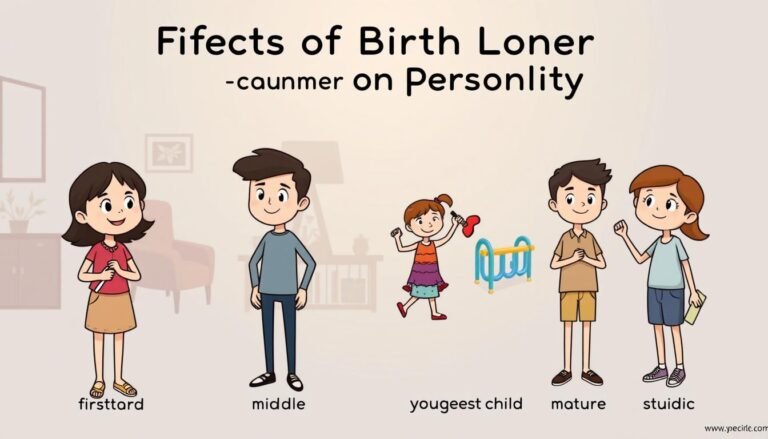Family Systems Theory: Understanding Family Dynamics
Ever wondered why family ties can be so complex and powerful in our lives? Family Systems Theory gives us a special way to see these connections. It helps us understand the intricate web that makes up our families.
Dr. Murray Bowen introduced Family Systems Theory in the late 1950s. It changed how we view family dynamics. This theory sees the family as a single emotional unit. It focuses on the family as a whole, not just individual problems. It’s a key tool in therapy, helping families see their own patterns and work towards change.
Family Systems Theory says our actions and feelings come from our family ties. It shows how family patterns affect each member and the family as a whole. By grasping these dynamics, we can strive for better relationships and personal growth.
This theory is a key part of family therapy. It helps us understand how families work together. It guides us in solving conflicts, managing stress, and improving how we talk to each other. As we explore Family Systems Theory, we’ll learn more about its main ideas and how it’s used in therapy.
Introduction to Family Systems Theory
Family Systems Theory was created by Dr. Murray Bowen in the 1950s. It changed how we see family dynamics. It shows that each family member’s actions and feelings impact everyone else.
Origins and Development
Dr. Bowen started his work with families of people with schizophrenia. He saw how family interactions affect mental health. This led to eight key concepts of Family Systems Theory.
Shift in Perspective
Family Systems Theory moved from focusing on individuals to families. It shows that family problems come from patterns and rules passed down through generations.
The Family as an Emotional Unit
At its heart, Family Systems Theory sees families as emotional units. It highlights how family members’ feelings and actions affect each other. Understanding these emotional connections is key to solving family issues.
| Key Concept | Description |
|---|---|
| Multigenerational Patterns | Behaviors and reactions passed down through generations |
| Family Rules | Unspoken guidelines that govern family interactions |
| Emotional Triangles | Three-person relationship systems within families |
Family Systems Theory gives a detailed view of family relationships. It helps us understand how families work together. It also shows how family members can stay connected while keeping their independence.
Core Concepts of Family Systems Theory
Family Systems Theory was created by Dr. Murray Bowen in the 1950s. It combines systems thinking with family research. This framework helps us understand how families interact.
Differentiation of Self
Differentiation of self is a key idea in Family Systems Theory. It means being able to keep your thoughts and feelings separate from your family’s. People with high differentiation can stay connected to their family while keeping their own identity.
Triangles and Triangulation
Triangles in family systems involve three people. When two people get tense, they might bring in a third to ease the stress. This is called triangulation. It can make relationships stable but also keep unhealthy patterns going.
Nuclear Family Emotional System
The nuclear family emotional system talks about how family members interact emotionally. It includes four main patterns: marital conflict, one spouse being dysfunctional, children being impaired, and emotional distance. These patterns shape family roles and affect the family as a whole.
Family Projection Process
In the family projection process, parents pass on their emotional issues to their children. This can make children take on specific roles in the family. It affects their personal growth and relationships.
| Concept | Description | Impact on Family Dynamics |
|---|---|---|
| Differentiation of Self | Ability to separate thoughts and feelings from family | Promotes individuality and healthy relationships |
| Triangles | Three-person relationship patterns | Can stabilize or complicate family interactions |
| Nuclear Family Emotional System | Patterns of emotional interaction in families | Shapes family roles and overall ecosystem |
| Family Projection Process | Transfer of parental emotional issues to children | Influences child development and family roles |
Grasping these core concepts helps therapists and families deal with complex relationships. It leads to better family functioning. By using Family Systems Theory, people can work towards healthier family dynamics and personal growth.
Emotional Fusion and Differentiation in Relationships
Family communication is key in setting emotional boundaries. Emotional fusion happens when we get too caught up in others’ feelings. This can cause bad communication, anxiety, and fights.
Differentiation, on the other hand, means keeping your own identity while staying close to loved ones.
Studies show families vary in emotional connection. Those with less differentiation often feel more anxious and struggle more in life. But, those who are well-differentiated stay calm in disagreements and make smart choices.
“Effective communication and support between partners can help manage anxiety and maintain realistic expectations during stressful periods.”
A study of 137 Italian couples found some interesting facts about differentiation:
| Gender | Factors Influencing Dyadic Adjustment |
|---|---|
| Men | Personal I-position |
| Women | Personal I-position, emotional cut-off, partner’s I-position and emotional cut-off |
Learning to differentiate emotionally helps us handle our feelings better. It leads to clearer communication and independent choices. This makes family relationships healthier and more real, with better emotional boundaries.
Applying Family Systems Theory in Therapy
Family systems therapy is a strong way to fix family relationships. It usually lasts about 12 sessions, fitting each family’s needs. Studies show it works well for many issues, like drug use, depression, and problems with kids.
Genograms and Family Mapping
Genograms are a big part of family therapy, thanks to Dr. Murray Bowen. Therapists draw these maps to show family ties and patterns over time. Monica McGoldrick, from the Multicultural Family Institute, has written a lot about genograms in her book “Genograms: Assessment and Intervention.”
Family Sculpting Techniques
Family sculpting is another useful method. It lets family members stand in for their relationships. This helps reveal hidden issues and improves how they talk to each other.
Improving Communication and Conflict Resolution
The main aim of family systems therapy is to make communication better and reduce fights. Therapists help families spot and talk about their patterns. This method has helped many with mental health issues, like relationship problems and drug use, in both kids and adults.
Source Links
- Understanding Bowen Family Systems Theory
- Family Systems Theory in Counseling: Key Techniques
- Introduction to the Eight Concepts — The Bowen Center for the Study of the Family
- Family systems theory
- Learn about Bowen Theory — The Bowen Center for the Study of the Family
- Bowen Family Systems Theory: 8 Key Concepts, Applications & Criticisms
- Emotional Fusion in Families: An In-Depth Analysis of Bowen’s Family Systems Theory
- Emotional Fusion and Differentiation of Self
- Differentiation of Self and Dyadic Adjustment in Couple Relationships: A Dyadic Analysis Using the Actor-Partner Interdependence Model
- What Is Family Systems Therapy?
- Family Systems Therapy
- Using Family Systems Theory in Psychotherapy








